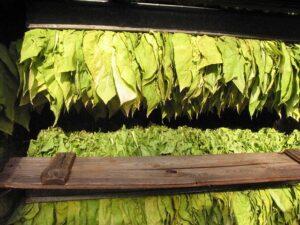The size of the production area in the domestic tobacco sector has stabilized
The actors of the sector threw themselves into this year’s work with confidence, the spring precipitation in most of the production area was good for the plants at the beginning, but the plantations were also badly damaged by the downpours, ice storms and the summer drought. According to the National Chamber of Agrarian Economy and the National Association of Hungarian Tobacco Growers, it is cause for hope that the reduction in the area under cultivation has finally stopped.

(Photo: Pixabay)
The tobacco farmers prepared for this season with optimistic expectations. The planted areas showed a particularly favorable picture in the spring, the seedlings took root well. Thanks to the heavy rainfall in June, the plants felt good, but due to the abundant water supply, they developed a modest root mass, which is why the sudden onset of heat later took a toll on the plantations. Some areas became flooded, which was also not favorable for the herd. As the drought worsened, plant growth stalled and forced ripening occurred. The farmers had to literally run a race against time, because under such conditions the quality and quantity of the crop could weaken day by day.
The hot summer not only brought the harvest forward in the orchards, but also the breaking of tobacco started weeks before the usual period this year
According to the overview of the National Chamber of Agriculture and the National Association of Hungarian Tobacco Growers, when taking delivery of the delivered tobacco, it appears that crops in non-irrigated areas were more severely affected by the summer heat than irrigated stands, so the market players expect a medium yield for the time being as an average of the two types of areas. This situation clearly shows that, not only in tobacco, but also in other cultures, the importance of irrigation in establishing more stable production conditions cannot be overemphasized. The acquisition of tobacco is currently ongoing, the producers are expected to be able to hand over Virginia by the end of November, and then the acquisition of Burley can also start in December.
The area reduction that has been going on for many years seems to finally stop and stabilize around 2,800 hectares, thanks to the perseverance of the farmers, the maintenance of subsidies and the increase in transfer prices
Based on the expectations, the update of the basic rights will also fulfill the hopes, and after the reorganization, the active farmers will be able to continue production under predictable conditions. Due to the increasingly extreme weather trend, producers can have less confidence that the weather, especially the distribution of precipitation, will be more balanced in the coming years. If the right conditions are met, the sector can be optimistic that the active farmers will continue to be ready to do everything for a good harvest, just like the management, where representatives of producers, buyers, representatives of the chamber and the staff of the Ministry of Agriculture work in close cooperation to achieve that this extremely close-knit community of producers can continue to benefit from the support resources by making the best use of the opportunities.
MADOSZ – NAK
Related news
This year, 10 percent more new wine was produced than last year
🎧 Hallgasd a cikket: Lejátszás Szünet Folytatás Leállítás Nyelv: Auto…
Read more >AM: Government helps farmers with a loan moratorium
🎧 Hallgasd a cikket: Lejátszás Szünet Folytatás Leállítás Nyelv: Auto…
Read more >More than 100 Hungarian farmers also demonstrated in Brussels
🎧 Hallgasd a cikket: Lejátszás Szünet Folytatás Leállítás Nyelv: Auto…
Read more >Related news
Even though the price of cocoa has halved, chocolate will not become cheaper
🎧 Hallgasd a cikket: Lejátszás Szünet Folytatás Leállítás Nyelv: Auto…
Read more >Temu is crushing domestic webshops – Christmas won’t change either
🎧 Hallgasd a cikket: Lejátszás Szünet Folytatás Leállítás Nyelv: Auto…
Read more >Green lending: sustainable financing gaining momentum
🎧 Hallgasd a cikket: Lejátszás Szünet Folytatás Leállítás Nyelv: Auto…
Read more >






